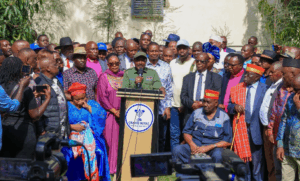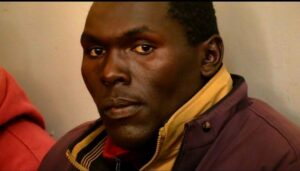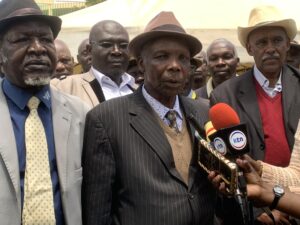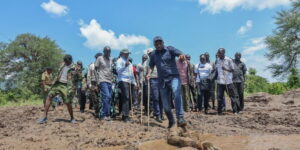Raila Odinga: The Flame That Never Faded
The expansion of highways, urban renewal projects, and energy initiatives became symbols of progress. Yet, the Grand Coalition was also marred
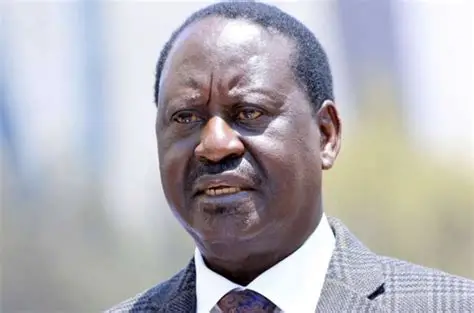
Raila Odinga’s story, like Kenya’s, is one of hope and heartbreak intertwined. He was never president, yet few have shaped the nation’s destiny as profoundly as he did. Photo/ Courtesy
By Mahlon Lichuma
Kenya is in mourning. The streets of Kisumu are silent, flags hang at half-mast, and across the country, conversations turn to one name, Raila Amolo Odinga.
News of his passing has left the nation divided between tears of gratitude and whispers of unfinished dreams. For decades, Raila stood at the center of Kenya’s political life as a man loved, feared, respected, and criticized in equal measure. His death marks the end of an era for a country he shaped with both vision and controversy.
He was many things: a freedom fighter, a reformist, a political strategist, and for many, the symbol of the unfulfilled promise of democracy. To others, he was a man who stayed too long in the arena, unable to hand over the torch he had carried so fiercely.
But to understand the legacy he leaves behind, one must trace the long and winding road that was Raila Odinga’s life.
Early Life, Education, and First Steps (1945–1980s)
Raila Odinga was born on 7 January 1945 in Maseno, Kenya, to Jaramogi Oginga Odinga and Mary Juma Odinga. His father was Kenya’s first Vice President, and his early years were marked by exposure to politics, public service, and dissent.
Raila studied in East Germany, where he earned a Master’s degree in Mechanical Engineering, returning to Kenya in 1970. In 1971, he founded East African Spectre, a company that would become one of the few African-owned gas cylinder manufacturing firms in the region.
His engineering background, discipline, and exposure to socialist ideals in Eastern Europe shaped his belief in equality, people-centered development, and strong public institutions values that would later define his political career.
Detentions and the Fight for Democracy (1980s–1992)
In 1982, after the failed coup attempt against President Daniel arap Moi, Raila Odinga was accused of treason and detained without trial. He spent six long years in prison enduring torture, isolation, and humiliation. When he was released in 1988, his resolve had hardened.
He was rearrested later that year and again in 1990 for his role in the push for multiparty democracy. When threats against his life intensified, Raila fled into exile in Norway in 1991. But his spirit remained unbroken. That same year, Kenya finally repealed the one-party system, ushering in multiparty politics a victory for the cause he had risked his life to defend.
Entry into Electoral Politics and Party Realignments (1992–2002)
Upon returning to Kenya, Raila won the Lang’ata parliamentary seat in 1992 under FORD-Kenya. After his father’s death in 1994, he became one of the most prominent figures in opposition politics.
In 1996, he left FORD–Kenya and joined the National Development Party (NDP), under which he contested the 1997 presidential election. Though he lost, he retained his parliamentary seat and built a loyal grassroots following.
In 2001, Raila’s NDP merged with KANU, and he was appointed Minister of Energy by President Moi. His reforms opened the energy sector to private players, improved rural electrification, and modernized fuel distribution systems.
But Raila’s loyalty to KANU was short-lived. In 2002, when Moi endorsed Uhuru Kenyatta as his successor, Raila led a mass defection that birthed the National Rainbow Coalition (NARC). NARC’s victory that year ended KANU’s 39-year rule, a historic moment that carried Raila’s political signature.
Cabinet Role and Growing Influence (2003–2005)
After NARC’s victory, Raila was appointed Minister for Roads, Public Works, and Housing in President Mwai Kibaki’s government. His influence was visible in the modernization of Kenya’s road networks and the push for infrastructure-driven growth.
However, internal disputes soon erupted within NARC over unfulfilled pre-election promises. The coalition split, and Raila found himself once again in opposition, positioning himself for the battles ahead.
The 2005 Referendum and the Road to Power (2005–2008)
In 2005, Raila led the campaign against a proposed constitution that sought to expand presidential powers. The “No” side won, marking his political resurgence. From that campaign was born the Orange Democratic Movement (ODM), symbolized by the orange fruit that had represented the “No” vote.
In December 2007, Raila contested the presidency against Mwai Kibaki. The disputed results triggered post-election violence that scarred the nation. More than a thousand lives were lost. Kenya teetered on the edge of collapse.
International mediation led by former UN Secretary-General Kofi Annan produced a power-sharing deal in February 2008. On 17 April 2008, Raila Odinga was sworn in as Kenya’s second Prime Minister under the Grand Coalition Government, a position created to bring peace and balance back to the country.
Prime Ministership: 2008–2013 Reforms and Turmoil
As Prime Minister, Raila Odinga introduced performance contracts in the public service to promote efficiency. His government championed the drafting and adoption of the 2010 Constitution, which brought devolution, checks on presidential power, and a stronger Bill of Rights.
Under his leadership, infrastructure development flourished. The expansion of highways, urban renewal projects, and energy initiatives became symbols of progress. Yet, the Grand Coalition was also marred by constant political infighting between Raila’s ODM and Kibaki’s PNU factions.
Corruption scandals such as the Maize Scandal and the Kazi Kwa Vijana program tarnished the coalition’s image. In 2010, when Raila attempted to suspend two ministers over corruption, President Kibaki overruled him, exposing deep divisions at the top.
Despite these struggles, the 2010 Constitution remains one of Raila’s enduring legacies, a document that redefined Kenya’s governance structure.
The 2013 and 2017 Elections
Raila ran for president again in 2013 under the Coalition for Reforms and Democracy (CORD) but lost to Uhuru Kenyatta. He challenged the outcome in the Supreme Court but lost the petition.
In 2017, running under the National Super Alliance (NASA), he once again sought the presidency. The Independent Electoral and Boundaries Commission declared Uhuru Kenyatta the winner, but Raila challenged the results. On 1 September 2017, the Supreme Court annulled the election, citing irregularities a first in Africa. However, Raila boycotted the repeat poll in October, insisting on electoral reforms.
The Handshake and the Politics of Unity (2018–2022)
On 9 March 2018, Raila Odinga and President Uhuru Kenyatta stunned the nation with the famous handshake at Harambee House. The act marked reconciliation after years of political hostility and ushered in the Building Bridges Initiative (BBI).
The BBI sought to address ethnic division, inclusivity, and governance challenges, but it was later nullified by the courts. Despite this, Raila’s gesture symbolized statesmanship choosing peace over endless confrontation.
In 2022, he made his fifth presidential bid under the Azimio la Umoja coalition but narrowly lost to William Ruto. The Supreme Court upheld Ruto’s victory, marking yet another defeat in Raila’s long political journey.
The Ruto Pact and Final Political Chapter (2023–2025)
In early 2025, Raila Odinga surprised many by signing a cooperation pact with President William Ruto’s United Democratic Alliance. The agreement aimed to foster national unity and collaboration. To his supporters, it was the ultimate act of maturity; to critics, it was a betrayal of opposition ideals.
It would be his last major political act before his passing an unexpected, quiet end to a lifetime of defiance.
Mixed Legacy: Triumph and Regret
In his death, Kenya reflects on a man who defined its modern political identity. He stood for democracy, justice, and reform, often at great personal cost. The 2010 Constitution, multiparty freedom, and political inclusivity remain among his greatest legacies.
Yet, not all remember him with admiration. To some, he embodied political fatigue, a leader who refused to pass the baton, whose many alliances blurred ideological lines, and whose leadership occasionally fell short of his lofty ideals.
Across Kenya, emotions are mixed. In Kisumu, crowds chant his name through tears. In Nairobi, citizens debate his record, some grateful, others skeptical.
Raila Odinga’s story, like Kenya’s, is one of hope and heartbreak intertwined. He was never president, yet few have shaped the nation’s destiny as profoundly as he did.
As the sun sets on a political giant, the question lingers: did Raila Odinga achieve his dream for Kenya, or did he simply light the torch for others to carry forward

